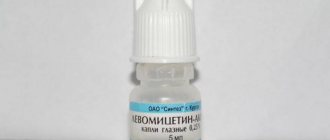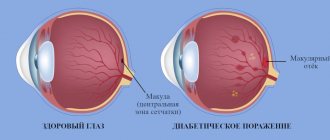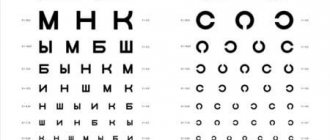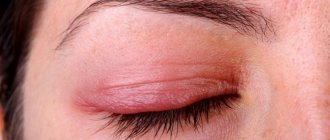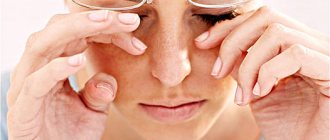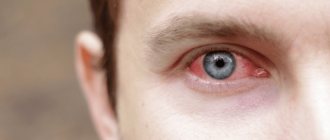The welding process is a hazardous type of work. Hands, face, eyes, and respiratory organs are at risk. Neglecting safety precautions rarely comes without unpleasant consequences: you can get a burn from welding if splashes of sludge or particles of molten metal reach you. The danger comes from heated welding equipment and used electrodes. There is a high probability of damaging the bronchi and lungs with harmful gases. Electric arc radiation is hazardous to the eyes.
Skin burn from welding
If you receive an injury, you must contact a doctor, but first aid to the victim can actually be provided at the workplace.
Types of welding burns and degree of damage
Radiation
Getting facial burns from welding is possible from the ultraviolet radiation of the electric arc. It affects the skin; any unprotected areas can be affected: hands, face. Possible symptoms:
- slight redness, itching (tan from welding);
- redness of the cheeks, eyelids, itching, pain when touched (I degree);
- the appearance of blisters of different sizes filled with liquid (II and III degrees).
Eye burns do not appear immediately, but 5–6 hours after welding. There are different degrees of severity of damage to the eyeballs and mucous membranes (sclera):
- mild is manifested by the appearance of pain in the eyes;
- medium, at stages II and III – slight clouding of the cornea, the formation of a thin film on the sclera;
- severe - roughened edges of the sclera, drying of dense film crusts to them, obvious turbidity of the cornea;
- super-severe – deep injury to the eyes and retina.
Chemical
In enclosed spaces, when gases released during the welding process accumulate, damage to the mucous membranes of the upper respiratory tract, nose, and eyes is possible. Main harmful factors:
- nitrogen dioxide and nitrous oxide;
- chlorine;
- carbon monoxide (carbon monoxide);
- fine melt fraction;
- ozone.
Facial burn from welding, treatment with folk remedies
The welding process is a hazardous type of work. Hands, face, eyes, and respiratory organs are at risk. Neglecting safety precautions rarely comes without unpleasant consequences: you can get a burn from welding if splashes of sludge or particles of molten metal reach you. The danger comes from heated welding equipment and used electrodes. There is a high probability of damaging the bronchi and lungs with harmful gases. Electric arc radiation is hazardous to the eyes.
Skin burn from welding
If you receive an injury, you must contact a doctor, but first aid to the victim can actually be provided at the workplace.
What not to do if you get a welding burn
When serious burns occur with the formation of blisters and deep damage to the skin, you need to seek medical help. If this is not possible, to prevent infection, the affected skin is disinfected. IT IS FORBIDDEN :
- Puncture any blisters that form. The liquid protects the skin from additional damage and works better than an antiseptic.
- Tear off the baked fragments of clothing stuck to it. Some alloys only melt the fibers, they turn into a sticky mass. If the clothes are torn off, the severity of the damage will increase. Such wounds get wet, become inflamed, and do not heal for a long time.
Welding burns are NOT treated :
- alcohol-containing liquids, as they irritate the skin, burn the wound, and increase pain;
- ointments and creams based on vegetable oils, they form thermal insulation of the affected area;
- all kinds of powders - they do not have any healing or protective effect and serve as an additional contaminating factor for the wound.
- Oil and creams are used in the process of restoring the dermis to protect young skin from the effects of atmospheric factors. The use of such means is strictly prohibited.
Light burns of the eyes
Classification of welding burns.
The most common injury is ultraviolet light damage to the eyes. It can be regarded as an occupational disease of welders. They are divided according to severity as follows:
- Mild severity - pain and a feeling of cutting in the mucous membranes of the eyelid, their redness, slight clouding of the cornea.
- Medium degree - blisters on the skin of the eyelids, films on the mucous membrane, which can be removed with a swab.
- Severe degree - complete clouding of the cornea, death of the affected skin, crust of adhered films on the mucous membrane.
- Super severe degree - deep necrosis of the tissues of the eye, retina and cornea.
The most “mean” feature of eye light injuries during the welding process is that they do not begin to appear immediately, but within five to six hours after receiving. It often happens that the patient does not even connect the pain in the eyes with the fact that he was welding a few hours ago. “A speck has gotten into the eye” is a typical explanation for discomfort in the conjunctiva. Nothing is being done... And so every day for a long time...
If a person constantly receives a dose of ultraviolet radiation, and this happens quite often among professional welders, the membranes of the cells of the retina of the eye are gradually destroyed and eventually die. And such a pathological process leads to gradual loss of vision.
Here are the steps to take at the slightest suspicion of light damage to the eye:
- Rinse eyes with clean water.
- In case of severe pain, rinse with a two percent solution of lidocaine or a similar analgesic.
- If foreign particles , such as metal, get into the eye, remove with tweezers or a clean swab.
- If available, a special antiseptic eye ointment to prevent infection of the organs of vision.
The most important thing is that before all the above actions you need to call a doctor or start an independent journey to an ophthalmologist.
You should absolutely not do the following:
- Use tap or dirty water for rinsing.
- Rub your eyes.
- Using regular eye drops will not help.
- Use any folk remedies without consulting your doctor.
First aid for burns
Depending on the degree of injury, a decision is made to call an ambulance. A first degree burn does not require emergency medical intervention. It is enough to apply something cold. In all other cases, while you are waiting for the doctors to arrive, you can alleviate the victim’s condition. Authorized first aid:
- Treatment of the wound with special means, these can be anti-burn antiseptics, ointment for burns from the emergency kit (they contain bactericidal components and have an analgesic effect);
- Isolate the burned area with a dry gauze bandage.
After providing assistance, the victim must be given something to drink; for this it is better to use hot tea; cognac, up to 1 teaspoon per glass, can be used as a vasodilator. If the area of injury is large, it is necessary to take analgesics to avoid painful shock.
First aid measures
What to do if your eyes are burned by welding? It is important to provide first aid to the victim, even if clinical symptoms are not currently manifested or are mild. The eye must be rinsed with a solution of potassium permanganate or chamomile decoction, and carefully remove foreign body particles with tweezers.
This manipulation will prevent the development of infectious processes, reduce swelling and reduce pain. You can also rinse by drawing distilled water into a disposable syringe without a tip and vigorously irrigating the surface of the eye.
If it is impossible to completely remove foreign bodies for various reasons, it is recommended to inject the patient with medications based on soluble calcium.
The victim of this type of traumatic injury should be in a dimly lit room, avoid bright light or exposure to direct sunlight on the visual organs, as this will worsen the situation.
First aid also includes applying a cool compress and drinking clean water to the patient. You can carefully apply a layer of antiseptic ointment to the skin under the eyelids.
In case of severe pain, you can take an analgesic tablet, but it will be more effective to anesthetize the affected visual organ by treating it with a lidocaine solution. After this, the victim should be taken to a medical facility in order to prescribe further therapy.
Further anti-burn therapy
How to treat a skin burn by welding of the 1st-2nd degree yourself at home:
- use any antiseptics and treat the affected area with them;
- products: Olazol, Panthenol, Solcoseryl;
- for blisters, use antibiotic-based ointments: Levomekol, Tetracycline;
- Zinc ointment has a drying effect.
If there is an infection or the wound is swollen, you should consult a doctor.
Self-treatment of radiation injuries is allowed. For this, folk remedies, painkillers (a weak solution of Lidocaine, Analgin) are used; they are available without prescriptions.
Signs of damage
If the eye is burned during welding, a person experiences severe pain. Other clinical manifestations appear over time, reaching their peak after 6 hours from the moment of injury. Traumatologists and ophthalmologists identify the following characteristic signs that occur if the victim receives a burn from welding his eyes:
- Burning sensation;
- Pain syndrome;
- Intense lacrimation;
- Fear of bright light;
- Involuntary spasms of the eyelids;
- Anxiety, increased restlessness.
Eye damage after welding, if the retina is affected, can significantly impair a person’s vision and even lead to complete blindness. Therefore, it is important to know how to provide the victim with first aid and provide effective, timely treatment!
What is the danger?
Damage to the cornea of the eye when working with a welding machine in the absence of adequate, promptly provided assistance can lead to the development of the following complications:
- Inflammatory processes occurring in a chronic form;
- Visual impairment;
- Scar formations;
- Ulcerative lesions;
- Clouding of the eye cornea, formation of a cataract;
- Astigmatism.
If the wound surface becomes infected, there is a high probability of developing concomitant endophthalmitis. Such unfavorable complications can be avoided if the burn is treated correctly and in a timely manner.
How to avoid getting burns when performing welding work
In order to avoid injury, it is necessary to adhere to safety rules during work and use personal protective equipment:
- jacket and trousers made of thick fabric;
- special leggings made from natural materials;
- welder's shield, it will protect the face from radiation and thermal injuries, save the eyes from ultraviolet radiation; There are special shields with forced air supply, they are used in enclosed spaces.
Prevention
The device of a welder's protective mask.
There will be no discoveries or surprises here. Welding is a high-risk profession, even a child understands this. But this is why adult novice craftsmen have little understanding of what safety precautions are when welding - a riddle of insoluble complexity.
It would be nice if the conversation took place twenty or thirty years ago, when the protective equipment for welders was uncomfortable and heavy, they resembled the helmets of monsters from horror films. But now, when there are security products on sale for every taste and budget - light, comfortable and even beautiful, ignoring them only speaks of frivolity and unprofessionalism.
The main thing is to remember and not neglect simple rules. Firefighters' real heroes are not those who put out the fire, the real heroes are those who put matches in their place. In welding, the real heroes wear the right masks and follow all safety rules.
We wish you a heroic future, light masks and comfortable suits!
Description
There are different degrees of injury from burns, as well as their classification - thermal, chemical, radiation, electrical. In some cases, you can limit yourself to using folk recipes that have been known for many years. However, a welding burn can be either thermal, chemical or light. What is the reason? During work, in addition to elevated temperatures, a person is exposed to infrared and ultraviolet radiation. Many of us are familiar with the latter; the sun's rays have the same effect, but to a clearly lesser extent. Also, particles of molten metal can cause chemical injury, depending on what elements you were working with. In any case, if you receive a burn from welding on your body, face or other areas, only a doctor can tell you what to do. During the inspection, he will accurately establish the nature of the phenomenon.
Remember that welding work must be carried out responsibly and it is necessary to use protection, which includes:
- A suit that protects from radiation, temperature, sparks and parts of molten metal;
- Mask with transparent shield for visibility. It protects your head and face from potential injury.
Treatment with drugs
If your eyes hurt from welding, then three groups of drugs are often prescribed:
- The first group of medications is aimed at relieving swelling and removing microbes. An inflamed cornea is a vulnerable place for the development of bacteria, so one of the drugs is prescribed: Ophthalmodec, Visin, Visoptin. The medicine must be instilled three times a day, one drop at a time.
- The patient often experiences discomfort, a feeling of sand and pain. To relieve this, medications from the second group are used - painkillers. Instillation of Alcaine, Tetracaine, or Ledocaine reduces pain, thereby easing the general condition.
- The third group of drugs are eye drops after welding, which remove the inflammatory process. The doctor may prescribe one of the antibiotics: Levofloxacin, Oftaquik, Tobramycin.
